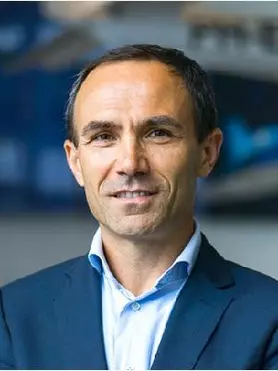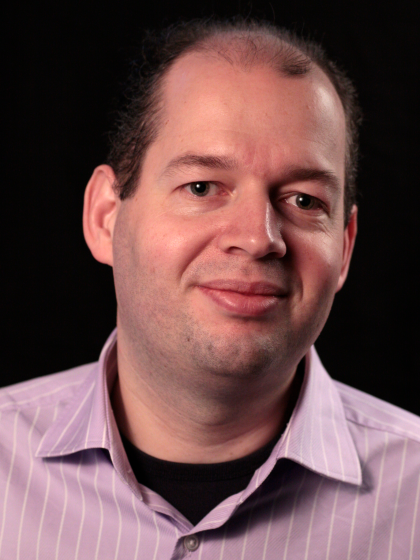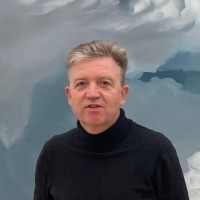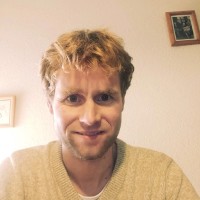Welcome to the Francken Symposium
Welcome to the website of the annual Francken Symposium! This year's theme was Aerodynamics with the slogan "Conquer the Chaos." During this event, speakers delivered lectures about the physics behind aerodynamics and its potential advancements in the future.
About the Symposium
Aerodynamics has been a research topic for decades; however, over the past decade, it has undergone a remarkable evolution, driven by rapid technological advancements, improved computational modeling, and innovative applications across various industries. The focus has been on optimizing airflow efficiency, reducing drag, and enhancing stability in fields ranging from aerospace engineering to automotive design and even sports science. With ongoing innovations and a growing emphasis on sustainability, the future of aerodynamics promises to revolutionize transportation, energy efficiency, and environmental impact, helping to shape a more advanced and efficient world.
The symposium was an exciting and informative day, and we hope to see you again next year!
Our Speakers
Day Chair

Andrea Giuntoli
RUG
Andrea obtained a Bachelor degree in Physics (2009-2012) and a Master degree in Theoretical Physics (2012-2014) from the University of Pisa, with a Master Thesis on coarse-grained modeling of proteins under the supervision of Valentina Tozzini at the NEST lab...
Andrea obtained a Bachelor degree in Physics (2009-2012) and a Master degree in Theoretical Physics (2012-2014) from the University of Pisa, with a Master Thesis on coarse-grained modeling of proteins under the supervision of Valentina Tozzini at the NEST lab. He obtained his PhD in Pisa in 2018 working in the group of Dino Leporini on simulations of glass-forming liquids. He was a postdoctoral fellow at NIST (Maryland) with Jack Douglas first, and at Northwestern University (Illinois) with Sinan Keten later, studying the rheological and mechanical properties of polymer nanocomposites within the CHiMaD collaboration. In October 2021 he started his position as Assistant Professor at the University of Groningen, working on multiscale modeling of soft and polymeric materials.

Fulvio Scarano
TU Delft
Fulvio Scarano graduated in Aerospace Engineering at University of Naples (1996) and obtained the Ph.D. degree in 2000 with a collaboration at the von Kármán Institute, where he earned the Theodor von Kármán prize.
Fulvio Scarano graduated in Aerospace Engineering at University of Naples (1996) and obtained the Ph.D. degree in 2000 with a collaboration at the von Kármán Institute, where he earned the Theodor von Kármán prize. He joined the faculty of Aerospace Engineering at TU Delft, where he leads the section of Aerodynamics.
His research is currently dedicated to advance Quantitative Flow Visualization Techniques, mostly Particle Image Velocimetry for fundamental fluid mechanics and applications in Aerodynamic flows, turbulence, aeroacoustics and propulsion.

David Lentink
RUG
David Lentink is Full Professor at the University of Groningen and studies how birds fly to develop better flying robots. He has a BS and MS in Aerospace Engineering (Aerodynamics, Delft University of Technology) and a PhD in Experimental Zoology cum laude (Wageningen University).
David Lentink is Full Professor at the University of Groningen and studies how birds fly to develop better flying robots. He has a BS and MS in Aerospace Engineering (Aerodynamics, Delft University of Technology) and a PhD in Experimental Zoology cum laude (Wageningen University). During his PhD he visited the Bioengineering department at the California Institute of Technology for 9 months to study insect flight. His postdoctoral training at Harvard was focused on studying bird flight. Before moving to Groningen, he directed his bird wind tunnel research lab at Stanford. Publications range from technical journals to cover publications in Nature and Science.

Koen Boorsma
TNO
Koen Boorsma graduated in Aerospace Engineering at Delft University of Technology (2003) and obtained his PhD in Aeroacoustics at the University of Southampton in 2008. He joined the Wind Energy department at the Energy research Center of the Netherlands (ECN) in 2008...
Koen Boorsma graduated in Aerospace Engineering at Delft University of Technology (2003) and obtained his PhD in Aeroacoustics at the University of Southampton in 2008. He joined the Wind Energy department at the Energy research Center of the Netherlands (ECN) in 2008, which transitioned to the Netherlands Organisation for Applied Scientific Research (TNO) in 2018. As a senior researcher he has been focusing on numerical modelling and experimental research (field and wind tunnel) related to wind turbine flows, which dictate power performance, loads and noise of these machines. Much of his work subjects the challenges that arise when trying to (aerodynamically) model the behaviour of large rotating and deforming blades operating in the atmospheric boundary layer in a computationally efficient yet accurate manner.

Iwan Philipsen
DNW
Currently, I work as a Knowledge and Technology Manager (KTM) at DNW (German-Dutch Wind Tunnels). DNW is an independent, non-profit foundation that operates wind tunnels for the Royal Netherlands Aerospace Centre (NLR)...
Currently, I work as a Knowledge and Technology Manager (KTM) at DNW (German-Dutch Wind Tunnels). DNW is an independent, non-profit foundation that operates wind tunnels for the Royal Netherlands Aerospace Centre (NLR) and the German Aerospace Centre (DLR), without direct government funding. DNW operates seven wind tunnels, including the HST in Amsterdam and the LLF in Marknesse, Europe’s largest wind tunnel.
Throughout my career, I’ve held various positions at NLR, DNW, and in industry. My roles have included team leadership, with some human resource management, and technical leadership in areas like balances and wind turbine rotor design. Today, my primary focus is on enhancing the knowledge-based, technology-oriented culture at DNW. Organizing education within the organization, expanding and strengthening our relationships with Universities and the research community, and further development of our wind tunnel simulation and test techniques.
“In Progress" (IP) is my personal motto, which symbolizes my commitment to continuously improving both processes and relationships. I love my work and am always fascinated by aerodynamics, but I also have a passion for sports and music.

Menno Kloosterman
DNV
Menno Kloosterman has been working on wind turbines since 200, his current focus is on: Development of aerodynamics module in wind turbine design software Bladed and C++...
Menno Kloosterman has been working on wind turbines since 200, his current focus is on: Development of aerodynamics module in wind turbine design software Bladed and C++, Wind Turbine loads calculations using Bladed, Aerodynamic blade design, Potential flow methods, Development of wind turbine cost of energy model in Python, Technology concept evaluation.
Pictures
Sponsors
DNV is an independent assurance and risk management provider, operating in more than 100 countries. Through its broad experience and deep expertise DNV advances safety and sustainable performance, sets industry standards, and inspires and invents solutions. Whether assessing a new ship design, qualifying technology for a floating wind farm, analysing sensor data from a gas pipeline or certifying a food company's supply chain, DNV enables its customers and their stakeholders to manage technological and regulatory complexity with confidence.
Driven by its purpose, to safeguard life, property, and the environment, DNV helps its customers seize opportunities and tackle the risks arising from global transformations. DNV is a trusted voice for many of the world’s most successful and forward-thinking companies.
DNV provides assurance to the entire energy value chain through its advisory, monitoring, verification, and certification services. As the world's leading resource of independent energy experts and technical advisors, the assurance provider helps industries and governments to navigate the many complex, interrelated transitions taking place globally and regionally, in the energy industry. DNV is committed to realizing the goals of the Paris Agreement, and supports customers to transition faster to a deeply decarbonized energy system.
When you join us, you join a united, global team. We thrive on and value the relationships we build with colleagues around the world. No matter where you are in the world, when you work at DNV, you’re at the heart of it.

